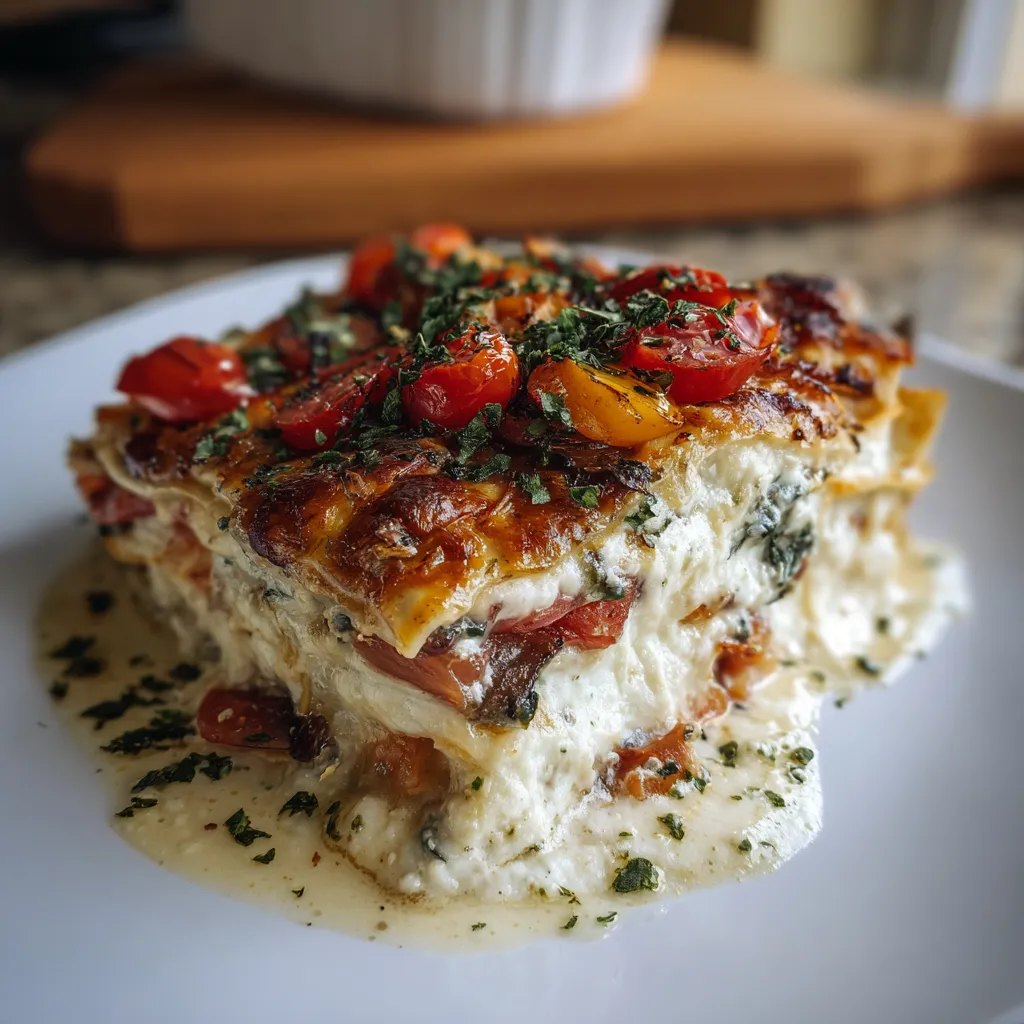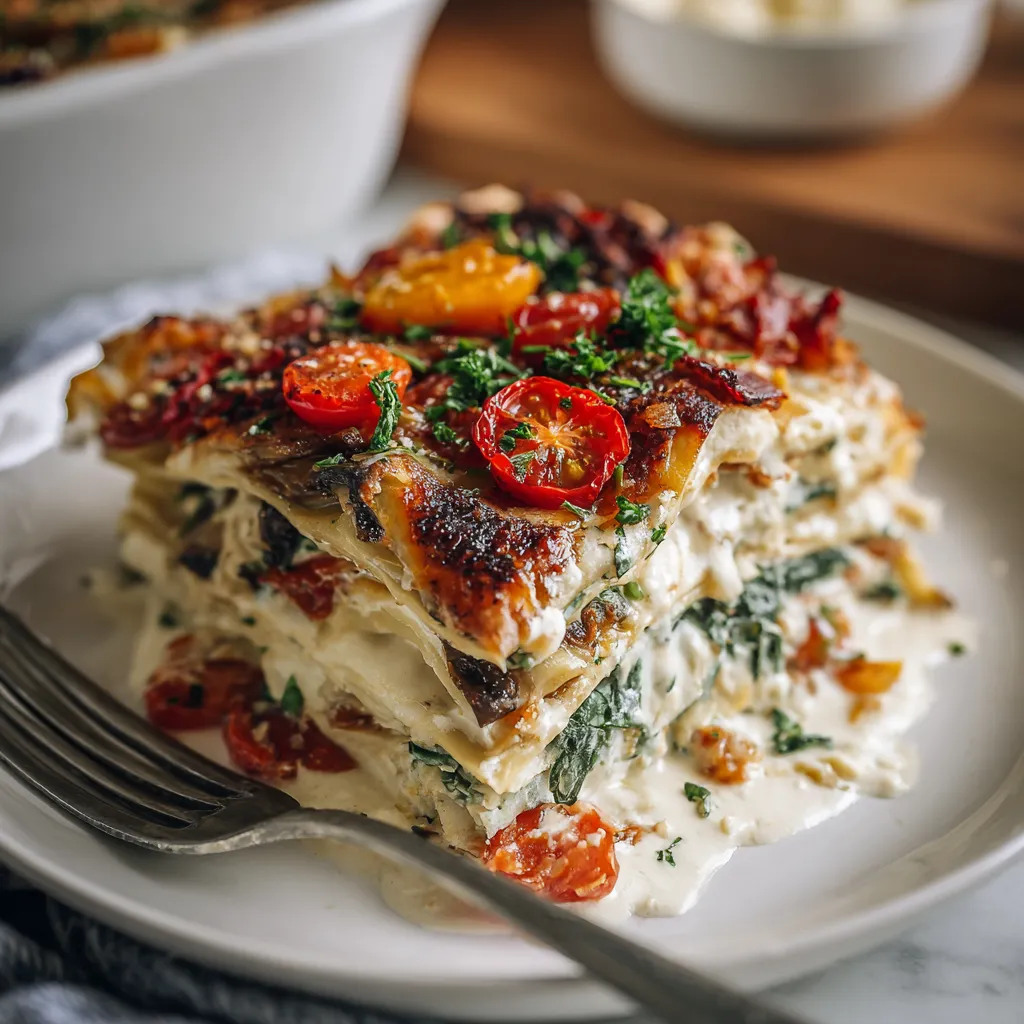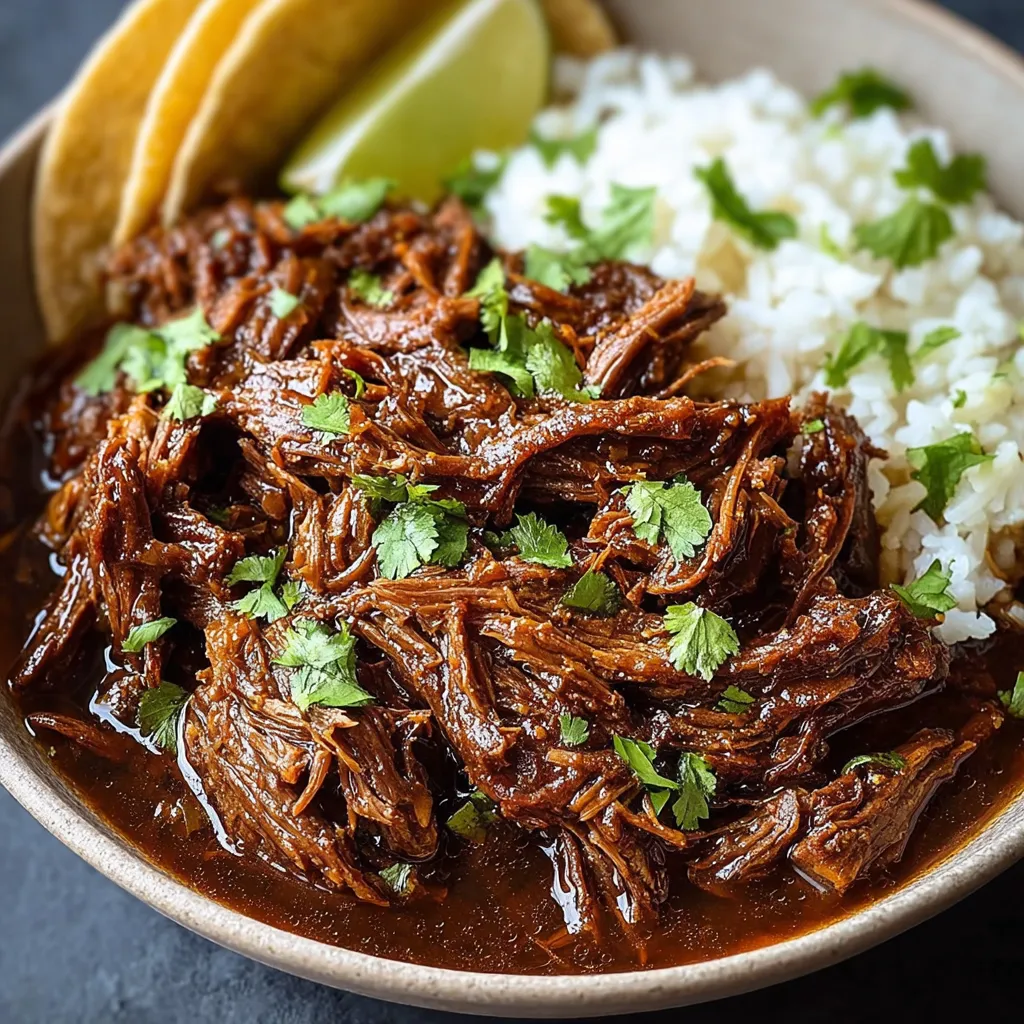Unveiling the Secrets of White Lasagna Alchemy
The success of any lasagna, especially a white lasagna brimming with vegetables, hinges on a few key scientific principles. First, understanding the role of moisture is crucial. Vegetables, when cooked, release water, which can lead to a soggy lasagna if not properly managed. This excess moisture dilutes the flavors and compromises the structural integrity of the dish. The goal is to pre-cook the vegetables to remove excess water before assembly. Second, the béchamel sauce, the heart of any white lasagna, needs to be flawlessly executed. A lumpy or bland béchamel can ruin the entire dish. The key is to create a smooth roux (butter and flour) and then gradually whisk in warm milk, constantly stirring to prevent lumps. Seasoning is also critical; don’t be shy with salt, pepper, and a touch of nutmeg. Finally, the cheese selection matters. While ricotta is a traditional lasagna ingredient, the type of mozzarella and parmesan used can significantly impact the flavor and texture. Fresh mozzarella, while delicious, releases more moisture than low-moisture mozzarella. Similarly, freshly grated parmesan provides a sharper, more nuanced flavor than pre-grated parmesan.The Ultimate Loaded Veggie White Lasagna Recipe
 Here’s the recipe that emerged from my culinary investigation, a symphony of flavors and textures designed to tantalize your taste buds:
Here’s the recipe that emerged from my culinary investigation, a symphony of flavors and textures designed to tantalize your taste buds:
Ingredients:
- For the Vegetable Medley:
- 1 tablespoon olive oil
- 1 large onion, chopped
- 2 cloves garlic, minced
- 1 red bell pepper, chopped
- 1 yellow bell pepper, chopped
- 1 zucchini, chopped
- 1 yellow squash, chopped
- 8 ounces cremini mushrooms, sliced
- 5 ounces baby spinach
- 1 teaspoon dried oregano
- 1/2 teaspoon dried basil
- Salt and pepper to taste
- For the Béchamel Sauce:
- 6 tablespoons butter
- 6 tablespoons all-purpose flour
- 4 cups milk, warmed
- 1/4 teaspoon ground nutmeg
- Salt and pepper to taste
- For the Cheese Filling:
- 15 ounces ricotta cheese
- 1/2 cup grated parmesan cheese
- 1 large egg, lightly beaten
- 1/4 cup chopped fresh parsley
- Salt and pepper to taste
- For Assembly:
- 9 lasagna noodles (oven-ready)
- 8 ounces low-moisture mozzarella cheese, shredded
Instructions:
1. Prepare the Vegetables:- Heat olive oil in a large skillet over medium heat. Add onion and garlic and cook until softened, about 5 minutes.
- Add bell peppers, zucchini, yellow squash, and mushrooms. Cook until vegetables are tender-crisp, about 8-10 minutes.
- Stir in spinach, oregano, basil, salt, and pepper. Cook until spinach is wilted, about 2 minutes. Remove from heat and set aside.
- In a medium saucepan, melt butter over medium heat. Whisk in flour and cook for 1-2 minutes, stirring constantly, to create a roux.
- Gradually whisk in warm milk, a little at a time, ensuring there are no lumps. Continue whisking until the sauce thickens, about 5-7 minutes.
- Stir in nutmeg, salt, and pepper. Remove from heat and set aside.
- In a medium bowl, combine ricotta cheese, parmesan cheese, egg, parsley, salt, and pepper. Mix well.
- Preheat oven to 375°F (190°C).
- Spread a thin layer of béchamel sauce in the bottom of a 9×13 inch baking dish.
- Arrange 3 lasagna noodles over the sauce.
- Spread half of the ricotta cheese mixture over the noodles.
- Top with half of the vegetable mixture.
- Sprinkle with 1/3 of the mozzarella cheese.
- Repeat layers: béchamel sauce, noodles, ricotta cheese mixture, vegetable mixture, mozzarella cheese.
- Top with remaining lasagna noodles and remaining béchamel sauce.
- Sprinkle with remaining mozzarella cheese.
- Cover the baking dish with aluminum foil.
- Bake for 30 minutes.
- Remove the foil and bake for another 15-20 minutes, or until the cheese is melted and bubbly and the lasagna is heated through.
- Let stand for 10-15 minutes before slicing and serving.
My Quest for White Lasagna Perfection
My first few attempts were a disaster. The lasagna was either too watery, the béchamel sauce was lumpy, or the vegetables were undercooked. Then, I had an “Aha!” moment: pre-cooking the vegetables thoroughly was non-negotiable. This not only released excess moisture but also intensified their flavors.The Soggy Saga: Taming the Vegetable Waterworks
Like many of you, I initially thought that simply layering raw vegetables into the lasagna would be sufficient. Big mistake! The water released during baking turned the lasagna into a soupy mess. My first attempt was practically Lasagna Soup by accident! I learned that sweating the vegetables in a skillet before assembly was crucial. I experimented with different cooking times and found that achieving a tender-crisp texture before layering was the sweet spot.Béchamel Blunders: Achieving Creamy Smoothness
My early béchamel sauces were plagued by lumps. I tried sifting the flour, using cold milk, and even using a blender to smooth out the sauce. Nothing seemed to work consistently. Then, I discovered the secret: warming the milk before adding it to the roux. This simple step drastically reduced the risk of lumps. Also, patient whisking is key. Don’t rush the process; allow the sauce to thicken gradually while constantly stirring.Cheese Conundrums: Finding the Right Balance
I experimented with different cheese combinations, including provolone, fontina, and even goat cheese. While some of these cheeses added interesting flavors, they didn’t quite capture the classic lasagna experience. I found that a combination of ricotta, parmesan, and low-moisture mozzarella provided the best balance of flavor, texture, and moisture content. The Million Dollar Ravioli Casserole uses a similar cheese blend to great effect, highlighting the power of this combination. I also considered adding some feta cheese, much like I do in my Spinach Ricotta Stuffed Shells, but decided against it to keep the flavor profile classic.Noodle Navigation: To Boil or Not to Boil?
I initially tried using regular lasagna noodles that required pre-boiling. This added an extra step and often resulted in overcooked or undercooked noodles. Then, I switched to oven-ready lasagna noodles. These noodles are a game-changer! They absorb moisture from the sauce during baking, eliminating the need for pre-boiling and ensuring perfectly cooked noodles every time. It made me think of the simplicity of my Cheesy Baked Tortellini Casserole, where the pasta cooks directly in the sauce.The Foolproof Veggie White Lasagna Technique
Here’s a step-by-step guide to guarantee white lasagna success:- Sweat the vegetables: Cook the vegetables in a skillet until tender-crisp and most of the moisture has evaporated. This prevents a soggy lasagna.
- Warm the milk: Warming the milk before adding it to the roux is essential for a smooth, lump-free béchamel sauce.
- Whisk patiently: Whisk the béchamel sauce constantly until it thickens to the desired consistency.
- Use low-moisture mozzarella: This will prevent the lasagna from becoming too watery.
- Embrace oven-ready noodles: These noodles eliminate the need for pre-boiling and ensure perfectly cooked lasagna noodles.
- Cover with foil: Covering the lasagna with foil during the first 30 minutes of baking prevents the cheese from browning too quickly.
- Rest before slicing: Let the lasagna rest for 10-15 minutes before slicing. This allows the sauce to set and makes it easier to cut and serve. Similar to how I let my Grilled Cheese Casserole set before cutting, it maintains its structure better.
Why is it important to pre-cook the vegetables before assembling the lasagna?
Pre-cooking the vegetables releases excess moisture, preventing the lasagna from becoming soggy. It also helps to intensify the flavors of the vegetables.
What’s the key to making a smooth, lump-free béchamel sauce?
The key is to warm the milk before adding it to the roux (butter and flour mixture) and to whisk constantly while the sauce thickens.
Why does the recipe call for low-moisture mozzarella cheese?
Low-moisture mozzarella cheese is used to prevent the lasagna from becoming too watery. Fresh mozzarella releases more moisture and can make the lasagna soggy.
Are oven-ready lasagna noodles necessary for this recipe?
While not strictly necessary, oven-ready lasagna noodles are highly recommended. They eliminate the need for pre-boiling and ensure perfectly cooked noodles by absorbing moisture from the sauce during baking.

Easy Loaded Veggie White Lasagna
Ingredients
Equipment
Method
- Heat olive oil in a large skillet over medium heat. Add onion and garlic and cook until softened, about 5 minutes.
- Add bell peppers, zucchini, yellow squash, and mushrooms. Cook until vegetables are tender-crisp, about 8-10 minutes.
- Stir in spinach, oregano, basil, salt, and pepper. Cook until spinach is wilted, about 2 minutes. Remove from heat and set aside.
- In a medium saucepan, melt butter over medium heat. Whisk in flour and cook for 1-2 minutes, stirring constantly, to create a roux.
- Gradually whisk in warm milk, a little at a time, ensuring there are no lumps. Continue whisking until the sauce thickens, about 5-7 minutes.
- Stir in nutmeg, salt, and pepper. Remove from heat and set aside.
- In a medium bowl, combine ricotta cheese, parmesan cheese, egg, parsley, salt, and pepper. Mix well.
- Preheat oven to 375°F (190°C).
- Spread a thin layer of béchamel sauce in the bottom of a 9×13 inch baking dish.
- Arrange 3 lasagna noodles over the sauce.
- Spread half of the ricotta cheese mixture over the noodles.
- Top with half of the vegetable mixture.
- Sprinkle with 1/3 of the mozzarella cheese.
- Repeat layers: béchamel sauce, noodles, ricotta cheese mixture, vegetable mixture, mozzarella cheese.
- Top with remaining lasagna noodles and remaining béchamel sauce.
- Sprinkle with remaining mozzarella cheese.
- Cover the baking dish with aluminum foil.
- Bake for 30 minutes.
- Remove the foil and bake for another 15-20 minutes, or until the cheese is melted and bubbly and the lasagna is heated through.
- Let stand for 10-15 minutes before slicing and serving.




